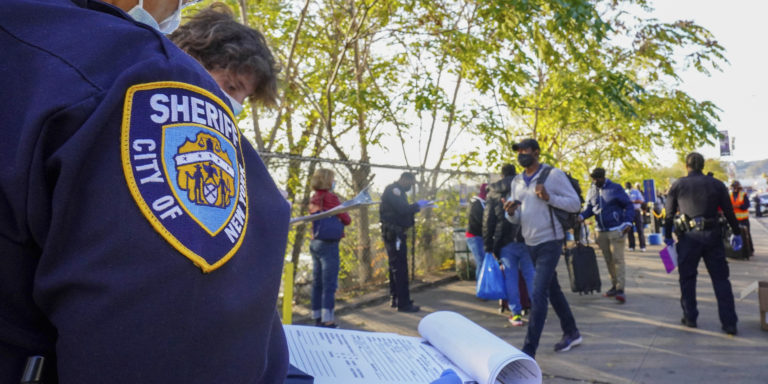INTELBRIEF
December 17, 2020
IntelBrief: How has COVID-19 Impacted Intelligence Collection and Analysis?

Bottom Line Up Front
- The surging global pandemic has had a direct impact on how intelligence is collected, analyzed, and disseminated.
- The hallmark of classic human intelligence—the face-to-face meeting—has been upended.
- Biometrics and sophisticated facial recognition software are far less effective in this pandemic climate given the ubiquity of facemasks.
- Intelligence agencies are also bureaucracies and are forced to deal with massive COVID-related personnel challenges.
The worsening global pandemic has upended typical operating modalities for intelligence agencies by significantly disrupting traditional face-to-face meetings between handlers and their sources, and keeping key relationships opaque. Even more mundane issues, such as the bureaucratic procedures of intelligence agencies with thousands of employees, schedules, and budgets, affect their ability to function effectively in this environment. From new promotions to new foreign postings, the coronavirus pandemic is stressing even the best human resource departments. Travel restrictions have delayed transfers for all manner of government employees, with intelligence officers among them. COVID-19 has temporarily halted much of the requisite staff rotations and activities, including language and other specialized training.
Domestic measures and international restrictions have also influenced the movement of personnel, such as the European travel restrictions imposed on US travelers because of soaring infection rates across many American states. With the different levels of quarantines, government-mandated lockdowns, and travel restrictions, human intelligence (HUMINT) gathering operations have been forced to adjust. Moving these encounters online is not viable, however tempting that approach might be. While they may present some new opportunities and risks, those encounters which do move online bring with them additional challenges. As witnessed with the recent cyberattack involving SolarWinds, where the Russians are believed to have gained undetected access to highly sensitive U.S. government systems, data housed online becomes vulnerable and ripe for exploitation. This is likely a golden age of cyber espionage, given how quickly companies moved to online operations for their workforce. For example, Zoom went from 10 million daily meetings to over 300 million daily meetings within the first few months of the pandemic this spring. Meetings on such videoconference platforms are not secure and are likely attractive targets for non-state actors seeking commercial gain as well as state actors seeking intelligence exploits. In addition, there are increased opportunities from a wave of virtual social encounters held entirely on unsecured servers that could leave business and government officials exposed and vulnerable to blackmail or coercion. Moreover, differences in personal interactions that now have to be virtual may also change the quality and nature of information and depth of understanding.
Domestically, the various U.S. intelligence agencies tried to continue their missions while protecting their respective workforces. For many, this meant staggered or rotating schedules, with essential teams divided in order to keep the overall number of people in offices low. The very act of deciding who is ‘essential’ is a difficult challenge for bureaucracies. Given the nature of their work, intelligence agents face serious challenges in working from home. Despite what Hollywood portrays, most employees do not have access to a SCIF (Sensitive Compartmented Information Facility) home office nor do they work in public, requiring many to retain access to offices to work with confidential information. In many government departments, responsiveness and timelines may also be impacted by regular staff members not having access to more sensitive or secured information. There are also delays in funding and programs, including for critical internships and apprentice-style programs that can help determine an individual’s early career path to short-term travel (TDY) needed for liaison operations.
Another intelligence and security issue likely impacted by the pandemic is the attenuated effectiveness of facial recognition software and their associated closed circuit television (CCTV) systems covering many major metropolitan areas. There have been longstanding issues with facial recognition in terms of privacy concerns and racial biases in the design and application of these systems. Now, cotton or paper masks, donned by more people to cut the transmission rate of COVID-19, are confounding these exceedingly complex systems. As law enforcement and intelligence agencies come to rely even more on biometrics in the future, there are higher risks of poor or manipulated information filtering through, especially as criminals and terrorists figure out new ways to evade emerging technologies. Law enforcement uses these systems for investigations, as do domestic intelligence agencies tracking movements and associations of possible terror or espionage targets. Some of the adjustments made by intelligence agencies as they seek to adapt to the new reality of the pandemic will be short-lived and ad hoc. Yet, other changes could be more permanent, fundamentally altering how these organizations operate, from collection requirements to more quotidian needs of the workforce.